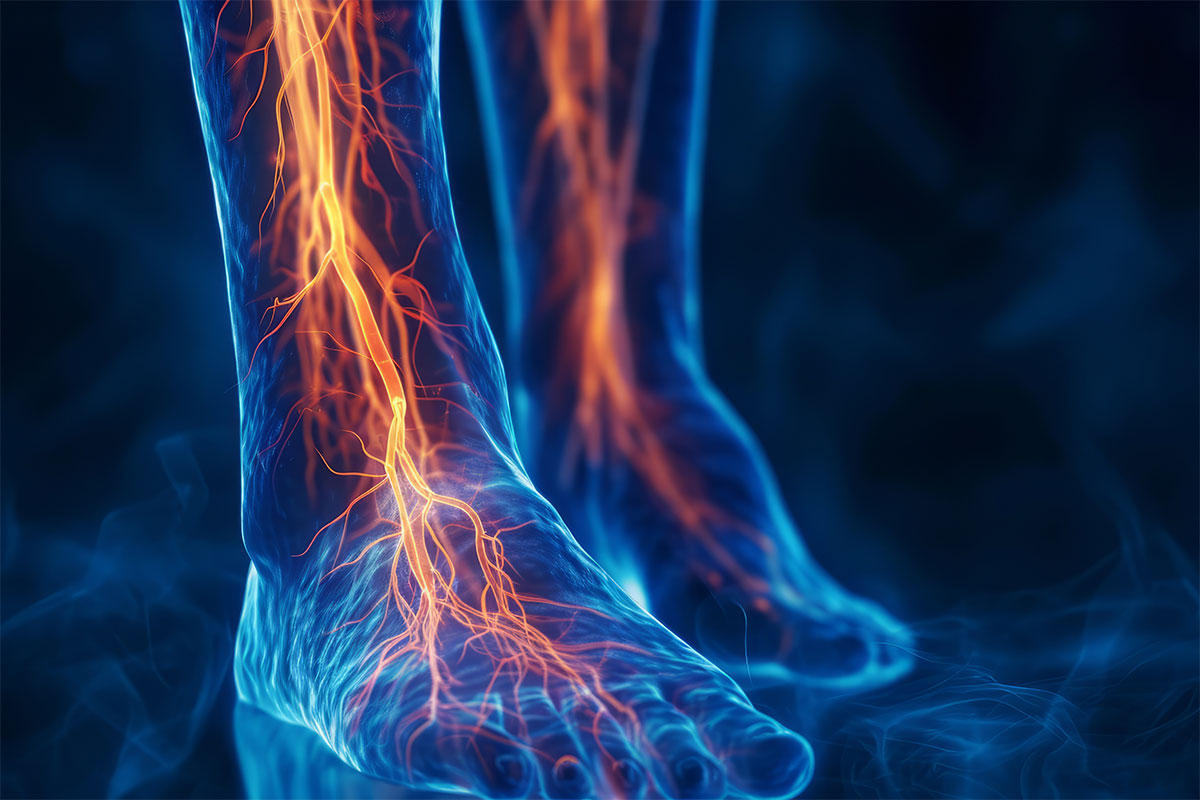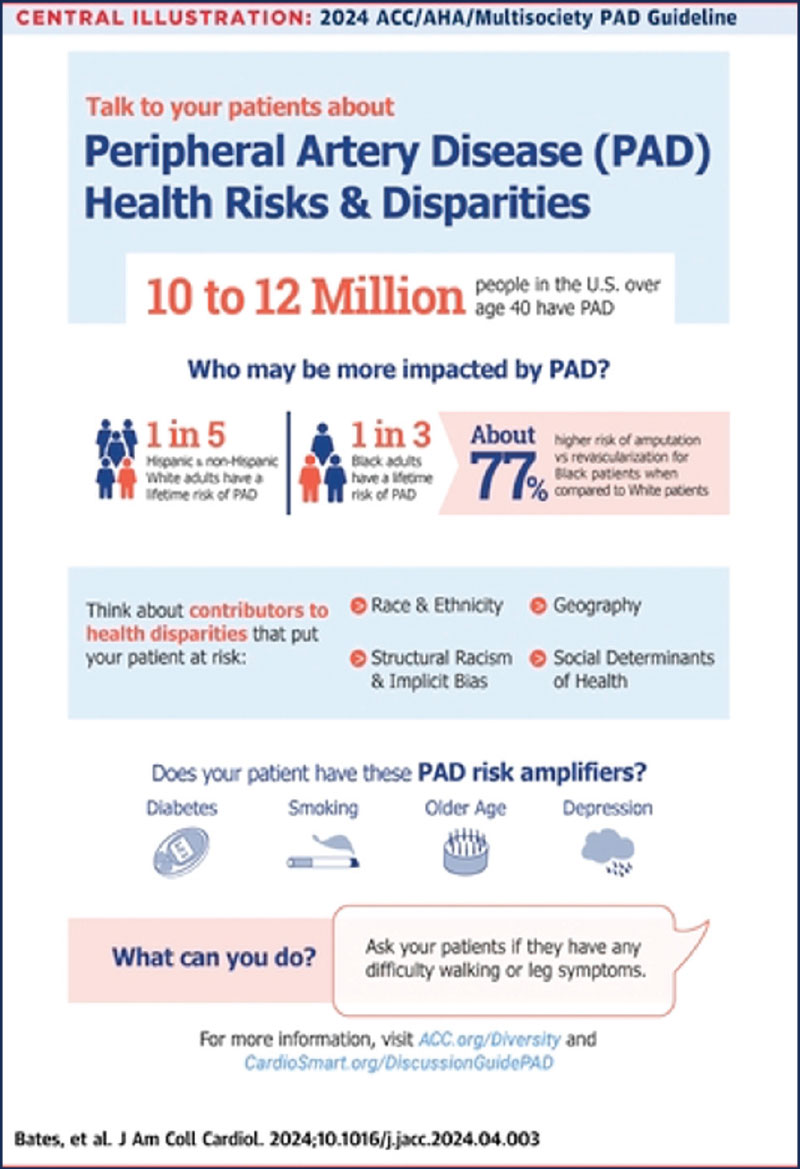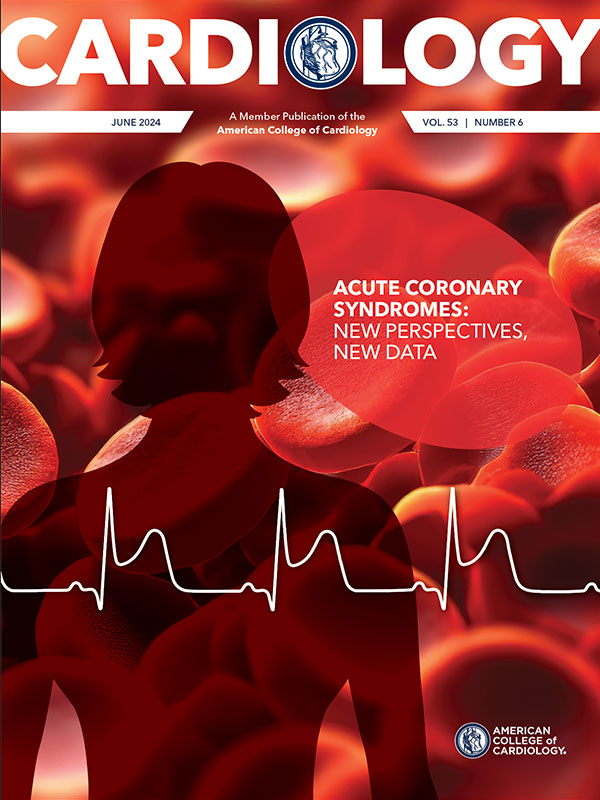New in Clinical Documents | Management of Lower Extremity PAD Focus of New ACC/AHA Guideline

The new 2024 Guideline on the Management of Lower Extremity Peripheral Artery Disease (PAD) released by the ACC and the American Heart Association (AHA) offers the latest, evidence-based recommendations to guide clinicians in the diagnosis and treatment of lower extremity PAD across its four clinical presentation subsets: asymptomatic disease, chronic symptomatic PAD, and the more severe subsets of chronic limb-threatening ischemia (CLTI) and acute limb ischemia.
Among the highlights, the guideline underscores the importance of timely diagnosis and proper management of PAD, including coordinated care delivered by a multispecialty team, for helping to prevent amputations and other cardiovascular complications and to improve quality of life.
In particular, the guideline notes that podiatrists and other specialists with expertise in foot care, wound healing therapies, and foot surgery should be important members of the team.
"Because of the complexities of PAD, to improve outcomes and reduce the risk of limb loss for these patients, a multispecialty care team approach that is focused on comprehensively addressing risk factor management, foot care and revascularization is needed to promote collaboration, avoid duplication of care and optimize patient outcomes," said Guideline Writing Committee Chair Heather Gornik, MD, FACC.
The guideline also addresses the use of effective medical therapies for patients with PAD to prevent major adverse cardiovascular and/or limb events, included antiplatelet and antithrombotic therapy, antihypertensive therapy and lipid-lowering therapy, such as a high-intensity statin.
For patients with PAD who are not at increased bleeding risk, the guideline notes that rivaroxaban (2.5 mg twice daily) combined with low-dose aspirin (81 mg daily) is effective to prevent major adverse cardiovascular and limb events.
Management of diabetes and smoking cessation are also recommended, along with structured exercise that can include supervised exercise therapy and community-based or home-based programs.
Additionally, the guideline points to revascularization to prevent limb loss in patients with CLTI, as well as to improve quality of life and functional status in those with claudication or who are not responsive to medical therapy and/or structured exercise.

Importantly, the new guideline also includes a focus on health disparities in PAD and their resulting impacts. For example, Black adults in the U.S. are often diagnosed with PAD at a more advanced stage and have a four-fold higher rate of major limb amputation, 30% higher heart disease mortality rate and 45% higher rate of stroke compared with White adults.
The guideline recommends intensified efforts at the individual and population-based levels to identify those at high-risk for PAD. Coordination between multiple stakeholders, including the cardiovascular community, public health groups, government and others to ensure equitable access to regular physical examinations including thorough assessment of the legs and feet is also important.
"Racial and ethnic disparities in the detection, management and health outcomes of PAD have long been present in the U.S. and are an important public health issue to be addressed," said Gornik. "These disparities highlight opportunities for initiatives focused on early disease detection and improving access to effective PAD treatments for people in under-resourced, at-risk communities."
The new PAD guideline is published in both JACC and Circulation. In addition to the ACC and AHA, the guideline was developed with and endorsed by the American Association of Cardiovascular and Pulmonary Rehabilitation, the American Podiatric Medical Association, the Association of Black Cardiologists, the Society for Cardiovascular Angiography and Interventions, the Society for Vascular Medicine, the Society for Vascular Nursing, the Society for Vascular Surgery, the Society of Interventional Radiology and the Vascular & Endovascular Surgery Society.

Practice Support
ACC's PAD Guideline Hub provides guideline-related resources for clinicians and patients, including the Guideline-at-a-Glance, the JACC Central Illustration, the Guideline Clinical App and more. Be sure to download the free CardioSmart PAD Discussion Guide and infographics. Click here to access it all.
Clinical Topics: Arrhythmias and Clinical EP, Heart Failure and Cardiomyopathies, Vascular Medicine, Atherosclerotic Disease (CAD/PAD), SCD/Ventricular Arrhythmias
Keywords: Cardiology Magazine, ACC Publications, Cardiomyopathy, Hypertrophic, Hypertrophic Cardiomyopathy, Death, Sudden, Cardiac, Peripheral Arterial Disease, Patient Care Team, Asymptomatic Diseases

